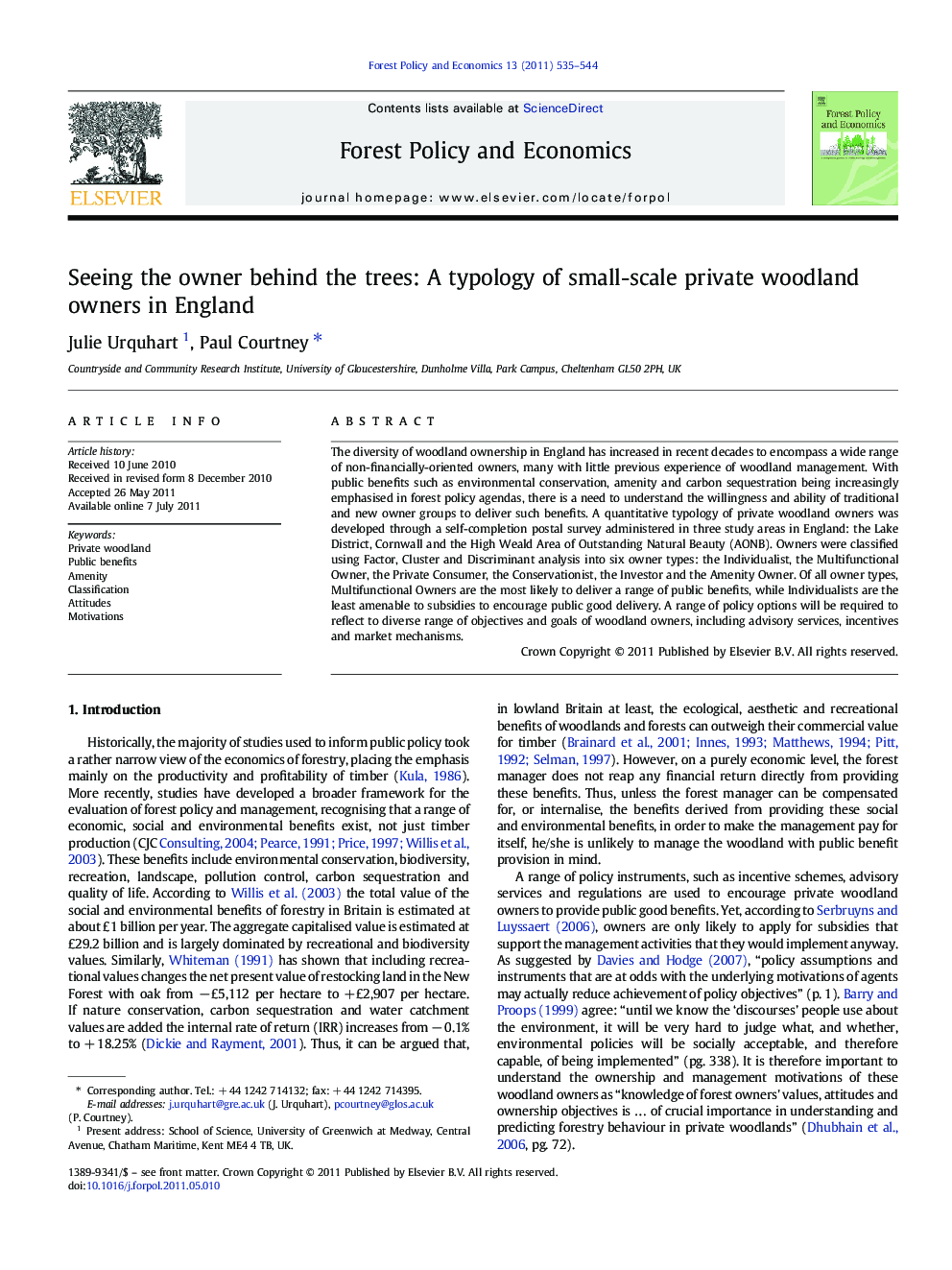| Article ID | Journal | Published Year | Pages | File Type |
|---|---|---|---|---|
| 91396 | Forest Policy and Economics | 2011 | 10 Pages |
The diversity of woodland ownership in England has increased in recent decades to encompass a wide range of non-financially-oriented owners, many with little previous experience of woodland management. With public benefits such as environmental conservation, amenity and carbon sequestration being increasingly emphasised in forest policy agendas, there is a need to understand the willingness and ability of traditional and new owner groups to deliver such benefits. A quantitative typology of private woodland owners was developed through a self-completion postal survey administered in three study areas in England: the Lake District, Cornwall and the High Weald Area of Outstanding Natural Beauty (AONB). Owners were classified using Factor, Cluster and Discriminant analysis into six owner types: the Individualist, the Multifunctional Owner, the Private Consumer, the Conservationist, the Investor and the Amenity Owner. Of all owner types, Multifunctional Owners are the most likely to deliver a range of public benefits, while Individualists are the least amenable to subsidies to encourage public good delivery. A range of policy options will be required to reflect to diverse range of objectives and goals of woodland owners, including advisory services, incentives and market mechanisms.
Research highlights► Private woodland owners were classified into six types using Factor, Cluster and Discriminant analysis. ► Multifunctional owners are the most likely to deliver a range of public benefits. ► Individualists are the least amenable to subsidies to encourage public good delivery. ► Policy options need to reflect the diverse range of objectives and goals of forest owners. ► Advisory services, incentives and market mechanisms will help foster public good delivery in the private sector.
